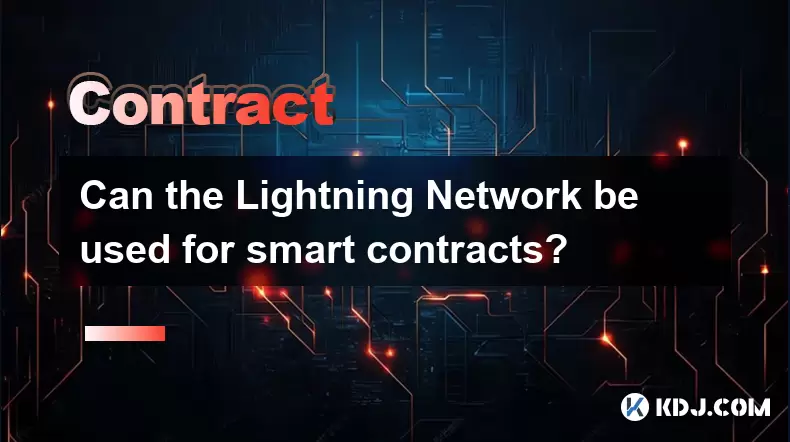-
 Bitcoin
Bitcoin $117,462.8204
-2.03% -
 Ethereum
Ethereum $3,061.1595
1.10% -
 XRP
XRP $2.9139
-2.19% -
 Tether USDt
Tether USDt $1.0002
0.02% -
 BNB
BNB $685.1357
-1.24% -
 Solana
Solana $161.3803
-2.11% -
 USDC
USDC $1.0002
0.04% -
 Dogecoin
Dogecoin $0.1948
-2.92% -
 TRON
TRON $0.2987
-0.89% -
 Cardano
Cardano $0.7330
-1.27% -
 Hyperliquid
Hyperliquid $47.7888
0.13% -
 Stellar
Stellar $0.4514
-2.93% -
 Sui
Sui $4.0169
2.74% -
 Chainlink
Chainlink $15.7088
-2.57% -
 Hedera
Hedera $0.2356
-3.33% -
 Bitcoin Cash
Bitcoin Cash $488.6656
-3.61% -
 Avalanche
Avalanche $21.2955
-1.47% -
 UNUS SED LEO
UNUS SED LEO $9.0415
0.42% -
 Shiba Inu
Shiba Inu $0.0...01332
-0.82% -
 Toncoin
Toncoin $3.0124
-0.62% -
 Litecoin
Litecoin $94.2175
-2.07% -
 Polkadot
Polkadot $4.0011
-0.61% -
 Monero
Monero $333.5714
-3.46% -
 Uniswap
Uniswap $9.1114
-1.56% -
 Dai
Dai $1.0000
0.02% -
 Ethena USDe
Ethena USDe $1.0005
0.00% -
 Bitget Token
Bitget Token $4.4951
1.87% -
 Pepe
Pepe $0.0...01242
0.47% -
 Aave
Aave $321.9943
0.51% -
 Bittensor
Bittensor $434.1984
5.13%
Can a smart contract be hacked?
Smart contracts, though powerful, can be hacked due to coding flaws, logic errors, or platform vulnerabilities, making rigorous auditing and secure development essential.
Jul 11, 2025 at 11:07 pm

Understanding the Vulnerabilities of Smart Contracts
Smart contracts are self-executing agreements with the terms directly written into lines of code. They operate on blockchain networks like Ethereum and are designed to automatically execute actions when predefined conditions are met. Despite their robustness, smart contracts can indeed be hacked due to flaws in coding, logic errors, or vulnerabilities in the underlying blockchain platform.
One major concern lies in the immutable nature of blockchain. Once a smart contract is deployed, it cannot be altered. This means that any mistakes or security loopholes present at deployment remain permanently unless there's a provision for upgradability. Hackers often exploit these static vulnerabilities to drain funds or manipulate contract behavior.
Common Attack Vectors Against Smart Contracts
There are several known attack methods that malicious actors use against smart contracts:
- Reentrancy Attacks: This occurs when a function makes an external call to another untrusted contract before resolving its internal state changes. A classic example is the DAO hack, where millions of Ether were stolen through recursive calls.
- Integer Overflow and Underflow: These happen when arithmetic operations exceed the maximum or minimum value of a number type, leading to unexpected results. Modern Solidity versions have built-in protections, but older contracts remain vulnerable.
- Gas Limit and Loops: Poorly structured loops in a contract can cause transactions to exceed gas limits, resulting in denial-of-service (DoS) scenarios.
- Front-running: Miners or bots can see pending transactions and manipulate the order of execution to their advantage, especially in decentralized exchanges.
- Timestamp Dependence: Contracts relying on block timestamps may be manipulated by miners, leading to incorrect logic execution.
Each of these vectors requires careful attention during development and auditing phases to mitigate risks effectively.
Real-World Examples of Compromised Smart Contracts
Several high-profile incidents demonstrate how real and damaging smart contract breaches can be:
- In 2016, The DAO was exploited using a reentrancy vulnerability, leading to the loss of over $50 million worth of Ether. The event ultimately resulted in a hard fork of the Ethereum blockchain.
- In 2017, Parity Wallet’s multisig contract was hacked twice — once due to a vulnerability in the library contract and again because of a flaw in the initialization process, resulting in the freezing of over $300 million in funds.
- More recently, various DeFi protocols have been targeted through flash loan attacks, where attackers borrow large amounts of tokens temporarily to manipulate prices and drain liquidity pools.
These cases underscore the importance of rigorous testing and third-party audits before deploying smart contracts.
Best Practices to Secure Smart Contracts
To reduce the likelihood of exploitation, developers should adopt a multi-layered approach to smart contract security:
- Code Audits: Engage professional auditors or use open-source tools to review your contract code. Reputable firms like Consensys Diligence and Trail of Bits specialize in this.
- Use Established Libraries: Leverage well-audited libraries like OpenZeppelin for common functionalities such as token standards and access control.
- Implement Upgradability Safely: Use proxy patterns for upgradeable contracts but ensure proper governance and timelocks to prevent unauthorized changes.
- Test Thoroughly: Employ unit tests, fuzzing, and integration testing across multiple environments. Tools like Hardhat and Truffle provide excellent frameworks.
- Limit External Calls: Reduce dependencies on external contracts, especially when dealing with user-controlled addresses.
- Monitor Post-Deployment: Utilize monitoring platforms like Tenderly or Blocksec to detect abnormal behaviors or suspicious transactions.
By following these practices, developers can significantly enhance the resilience of their smart contracts.
The Role of Blockchain Platforms in Smart Contract Security
While developers bear much of the responsibility, the design and features of the blockchain platform also play a crucial role in contract security. For instance:
- Ethereum has evolved over time to include features like EIP-1559 and improved gas mechanics, which indirectly affect contract interactions.
- Solidity, the most widely used language for writing Ethereum smart contracts, continues to evolve with better syntax checks and compiler warnings.
- Some newer platforms like Solana, Polkadot, and Tezos offer alternative smart contract languages and execution models that may inherently reduce certain classes of vulnerabilities.
Choosing the right platform and staying updated with its evolving capabilities can help developers avoid pitfalls specific to certain ecosystems.
Frequently Asked Questions
Q: Can a smart contract be modified after deployment?
A: Most smart contracts are immutable once deployed. However, some implement proxy patterns or upgradeable contracts that allow limited modifications through designated admin functions.
Q: How do I know if a smart contract has been audited?
A: You can check the contract address on platforms like Etherscan or BscScan, where verified source code and audit reports are often published. Additionally, projects usually announce audit results via official communication channels.
Q: Are all smart contract hacks reversible?
A: No. Because blockchain transactions are irreversible, recovering stolen funds typically requires community consensus or a hard fork, as seen in the case of The DAO.
Q: What should I do if I find a vulnerability in a deployed contract?
A: Responsible disclosure is key. Contact the project team privately and consider offering a bug bounty solution rather than exploiting the issue. Platforms like Immunefi facilitate ethical reporting and rewards.
Disclaimer:info@kdj.com
The information provided is not trading advice. kdj.com does not assume any responsibility for any investments made based on the information provided in this article. Cryptocurrencies are highly volatile and it is highly recommended that you invest with caution after thorough research!
If you believe that the content used on this website infringes your copyright, please contact us immediately (info@kdj.com) and we will delete it promptly.
- DeFi Demystified: Navigating the Wild West of Decentralized Finance
- 2025-07-16 04:50:12
- Bitcoin's ATH Surge: Exchange Inflows and What They Mean for You, Ya Know?
- 2025-07-16 04:30:12
- Wemade CEO Cleared in WEMIX Case: A New Chapter?
- 2025-07-16 04:30:12
- PENGU Token, Pudgy Penguins, and Supply Inc.: A NYC Take on the Hottest Collab
- 2025-07-16 03:50:12
- Crypto Bull Run: Riding the Wave to Maximize Gains
- 2025-07-16 02:50:12
- Uniswap, Aptos, BlockDAG: Decoding the Latest Crypto Moves
- 2025-07-16 03:55:12
Related knowledge

What is a stablecoin-margined contract vs a coin-margined contract?
Jul 15,2025 at 06:36pm
Understanding the Difference Between Stablecoin-Margined Contracts and Coin-Margined ContractsIn the world of cryptocurrency derivatives, margin plays...

How to backtest a Bitcoin futures trading strategy?
Jul 15,2025 at 11:35am
Understanding Bitcoin Futures TradingBitcoin futures trading involves contracts to buy or sell Bitcoin at a predetermined price and date in the future...

Psychology of trading Bitcoin contracts
Jul 13,2025 at 02:50am
Understanding the Emotional Rollercoaster of Bitcoin Futures TradingBitcoin contract trading, especially in the form of futures, introduces a high lev...

Can the Lightning Network be used for smart contracts?
Jul 14,2025 at 11:28pm
Understanding the Lightning Network's Core FunctionalityThe Lightning Network is a second-layer solution built on top of blockchain protocols like Bit...

How does macroeconomic news affect Bitcoin futures prices?
Jul 15,2025 at 04:56pm
Understanding the Relationship Between Macroeconomic News and Bitcoin FuturesBitcoin futures are derivative contracts that allow traders to speculate ...

Best time of day to trade Bitcoin contracts?
Jul 13,2025 at 05:29am
Understanding Bitcoin Contracts and Their VolatilityBitcoin contracts, particularly futures contracts, are derivative instruments that allow traders t...

What is a stablecoin-margined contract vs a coin-margined contract?
Jul 15,2025 at 06:36pm
Understanding the Difference Between Stablecoin-Margined Contracts and Coin-Margined ContractsIn the world of cryptocurrency derivatives, margin plays...

How to backtest a Bitcoin futures trading strategy?
Jul 15,2025 at 11:35am
Understanding Bitcoin Futures TradingBitcoin futures trading involves contracts to buy or sell Bitcoin at a predetermined price and date in the future...

Psychology of trading Bitcoin contracts
Jul 13,2025 at 02:50am
Understanding the Emotional Rollercoaster of Bitcoin Futures TradingBitcoin contract trading, especially in the form of futures, introduces a high lev...

Can the Lightning Network be used for smart contracts?
Jul 14,2025 at 11:28pm
Understanding the Lightning Network's Core FunctionalityThe Lightning Network is a second-layer solution built on top of blockchain protocols like Bit...

How does macroeconomic news affect Bitcoin futures prices?
Jul 15,2025 at 04:56pm
Understanding the Relationship Between Macroeconomic News and Bitcoin FuturesBitcoin futures are derivative contracts that allow traders to speculate ...

Best time of day to trade Bitcoin contracts?
Jul 13,2025 at 05:29am
Understanding Bitcoin Contracts and Their VolatilityBitcoin contracts, particularly futures contracts, are derivative instruments that allow traders t...
See all articles

























































































